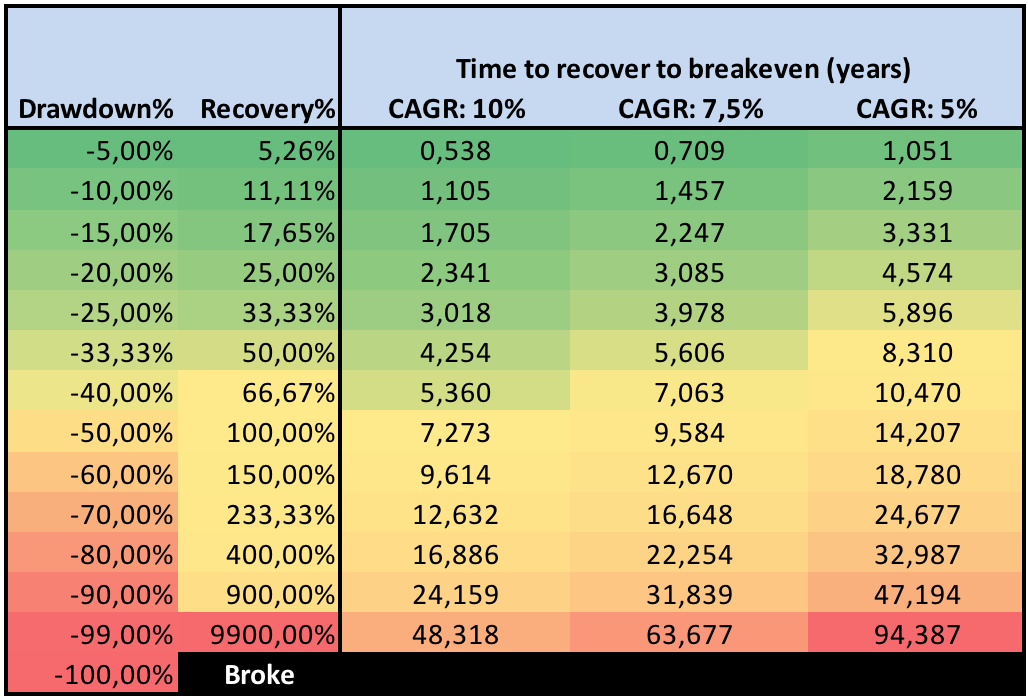

Get Strategic Risk Management now with the O’Reilly learning platform. Unlike other metrics, such as volatility, and downside measures, like skewness or semi-variance, the maximum drawdown statistic crucially depends on the order in which the returns. It is expressed as a percentage and calculated as the difference. The maximum drawdown statistic is appealing because it is unambiguous in its calculation and captures the most unfavorable investment outcome: buying at the peak and selling at the bottom. Drawdown refers to the extent to which the value of a fund, stock, or portfolio can decline. For example, for hedge fund investments, money is often pulled out when a threshold for the maximum drawdown is crossed.

When evaluating managers or strategies, investors pay close attention to the maximum drawdown, which is the largest peak-to-trough return over the life of an investment. In practice, however, asset managers and fiduciaries routinely use the drawdown statistic for fund allocation and redemption decisions. That is, conditional on a drawdown, is there information in drawdowns that could be useful for strategic portfolio management? In addition, how does the application of drawdown control impact portfolio expected returns? 1Ĭommon risk metrics reported in academia include volatility, skewness, and factor exposures, but the maximum drawdown statistic is rarely calculated, perhaps because it is path dependent and estimated with greater uncertainty. We now explore the information in the drawdown risk metric. Chapters 3 and 4 focused on two portfolio mechanisms that serve to reduce the severity of portfolio drawdowns: strategic rebalancing and volatility targeting.


 0 kommentar(er)
0 kommentar(er)
